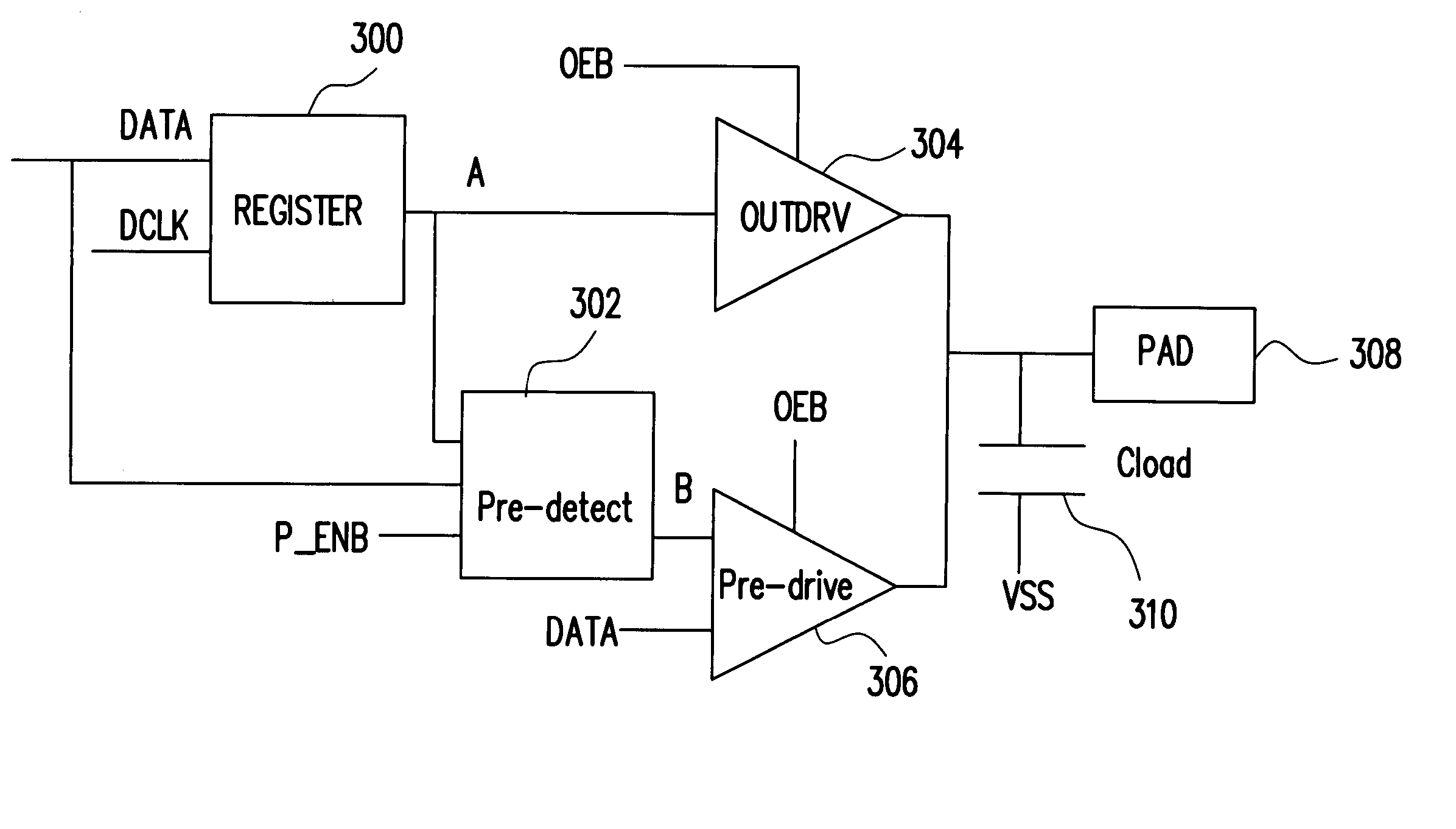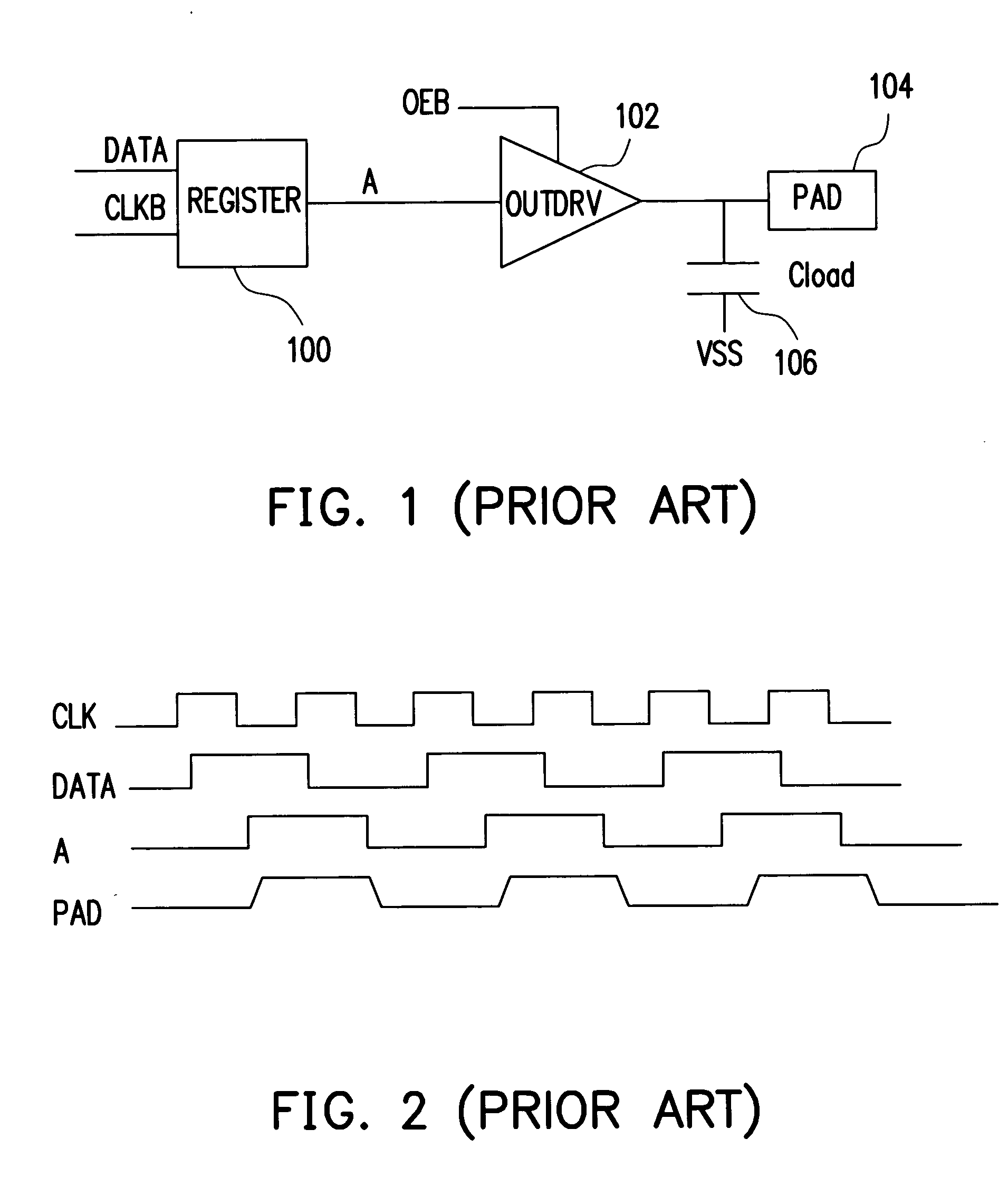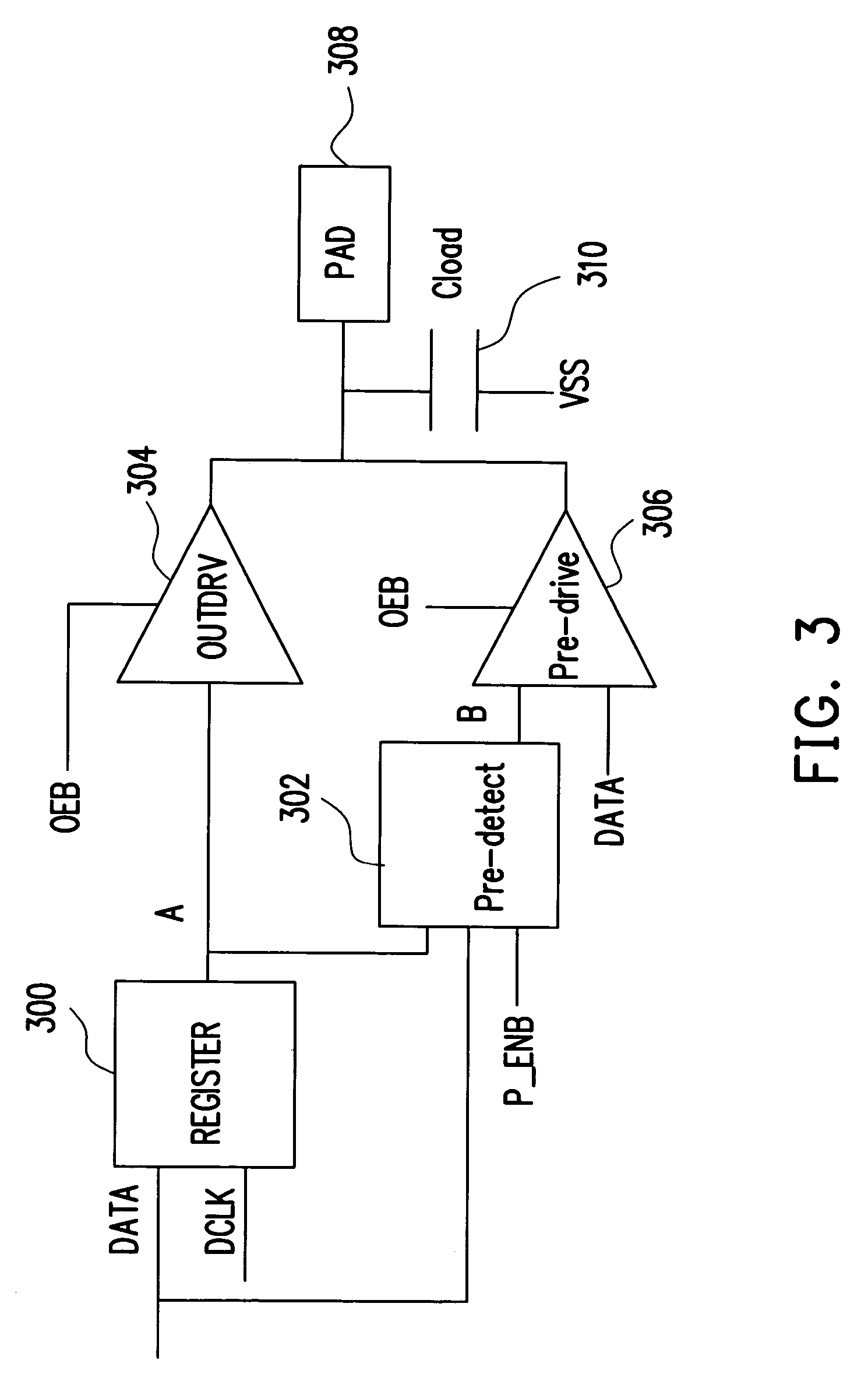Memory I/O driving circuit with reduced noise and driving method
- Summary
- Abstract
- Description
- Claims
- Application Information
AI Technical Summary
Benefits of technology
Problems solved by technology
Method used
Image
Examples
Embodiment Construction
[0022] In the invention, a novel memory I / O driving circuit is proposed. In the present invention, a pre-driving circuit is used to at least adjust the rising edge and the falling edge of the data signal at the I / O pad. Due to the pre-driving effect, the signal edges at the first part have been adjusted to be more horizontal. This at least allows the data can be keep longer with more hold time with reduced errors if the host timing is shifted.
[0023]FIG. 3 is block diagram, schematically illustrating the memory-card driving circuit for driving multiple I / O pads in a memory card, according to an embodiment of the invention. In FIG. 3, the memory-card driving circuit of the invention includes a register 300, a pre-detecting circuit 302, an output driving circuit (OUTDRV) 304, a pre-driving circuit 306. In addition, an I / O pad 308 is coupled to the output terminals of the output driving circuit (OUTDRV) 304 and the pre-driving circuit 306. However, a load capacitor 310 and a circuit lo...
PUM
 Login to View More
Login to View More Abstract
Description
Claims
Application Information
 Login to View More
Login to View More - R&D
- Intellectual Property
- Life Sciences
- Materials
- Tech Scout
- Unparalleled Data Quality
- Higher Quality Content
- 60% Fewer Hallucinations
Browse by: Latest US Patents, China's latest patents, Technical Efficacy Thesaurus, Application Domain, Technology Topic, Popular Technical Reports.
© 2025 PatSnap. All rights reserved.Legal|Privacy policy|Modern Slavery Act Transparency Statement|Sitemap|About US| Contact US: help@patsnap.com



